The Modern Sporting Rifle seems to have a polarizing effect on shooters and non-shooters alike, at least in my experience.
To an old-school rifle shooter, an AR-style rifle is anathema to his or her way of thinking…rifles are supposed to be wood and metal with no plastic.
I am a fan of the MSR, or the “Black Rifle” as some call it.
So, it was with a bit of enthusiasm that I accepted the offered test gun from Rock River Arms, their Rock River Arms LAR-15 BTB 5.56×45 rifle, in tan and black.

As you can see, it’s a rather handsome specimen with its two-tone finish and furniture. It was a decent shooter as well.
- Collapsible buttstock
- Reliable
- Sights are easy to adjust
- Front post is black and hard to pick up
- Drop-in rail has limited customization options
Before we get on with things, let’s take a brief look at the history of the AR platform, both military and civilian.
BONUS OFFER: Get your free shooting range targets to print at home!
Get your free targets to print at home!
Stoner’s Brainchild

It started in 1956. Eugene Stoner had designed the AR-10 in 7.62 NATO. The cartridge was adopted two years earlier. At that time, the United States Army was thinking of replacing the M1 Garand. They even considered rechambering the Garand. They were open to suggestions, and this was as good a time as any to introduce a new rifle. So, Stoner submitted his rifle and got rejected. However, it few foreign militaries started taking note.
As we know now, the army settled on Springfield’s M14 in the end, but it was big and heavy. Some of the powers-that-be wondered if they needed a full-size battle rifle that’s good at 600 yards. Modern confrontations were occurring at closer ranges, usually less than 300 yards. It was around this time that Russia introduced a midrange .30-caliber round, the 7.62×39. They started to deploy it in earnest during the 1950s in the AK-47. This, of course, wasn’t a full-power rifle round, a fact that’s duly noted by the US defense department.

At that time, Remington introduced the .223, which became the 5.56×45 in military rifles’ chambers. For a concise description of the difference between .223 and 5.56, go check the history of the 5.56×45 NATO.
Enter Colt
In 1959, ArmaLite was having financial difficulties. It couldn’t meet manufacturing needs, so it sold the AR-15 to Colt. Colt undertook production of the AR-15, which morphed into the selective-fire M16.

In the early 1960s, the U.S. sent observers, trainers, and Special Forces troops to Vietnam. This started as an effort to train indigenous forces against the communist North Vietnamese Army and the Viet Cong. They ranged from North Vietnam, employing standard military operations and guerilla tactics in forays across the border with South Vietnam.
As we know now, this grew into what became the Vietnam War. Everyone knows the story, such as how relatively few troops were committed at the start. By the time the U.S. left Vietnam in March 1973, it had placed more than 550,000 military personnel in the country. This isn’t a comment about that war as I have only admiration and respect for all who served. I was only showing why we needed a whole lot of rifles and ammunition. Unlike the .30, we didn’t have tons of 5.56 ammo lying around. So, the ammo companies geared up to supply them.
An interesting side note ― U.S. Defense Secretary Robert McNamara decided the fate of the M14. He concluded that the M14 was:
- Too expensive to produce.
- Too big and heavy.
- Fired a needlessly overpowered round.
He asked that the AR be put into production, albeit with selective-fire capabilities. We went from a full-power .30 caliber battle round to a .22 caliber midrange round. Some folks liked it; others, not so much.
You know the rest:
- Winchester, which was brought on board to help produce ammo, went from a stick powder to a ball powder
- How that caused increased pressure and fouling
- Telling troops that their M16s didn’t need cleaning caused battlefield issues
Moreover, this put many soldiers and Marines in great danger. Worse, some rifles quit working in the heat of battle due to fouling and jungle crud buildup. We then figured out that these rifles did indeed need to be cleaned, and that helped to lessen the problem. Other positive changes included the forward assist on newer models. Winchester also went back to the original stick powder. If you served and have experience with this situation, please leave a comment below ― I’d like to hear your take on it. For an interesting read, check out this article about the history of the AR-15/M16 rifle.
Now that we’ve seen where the AR-15/M16 came from, what about the company that made the Rock River Arms LAR-15? Let’s check it out.
A Bit of History on the LAR-15
Brothers Mark and Chuck Larson worked for Springfield Armory. Mark was the head armorer. They formed a partnership, leaving Springfield Armory. in 1991 to work with Les Baer in the production of his custom 1911 pistols. In 1993, they left Les Baer Custom to work with Eagle Arms in Coal Valley, Illinois, producing AR-15 rifles. Tolerance Plus was founded as a result of their efforts (later Rock River Arms). They began making 1911 pistols. In 1997, they quit Eagle Arms and began creating AR-15-style weapons. Mark died in April of 2013.
A Big Order From the DEA
The U.S. Drug Enforcement Administration was looking for a new AR-style rifle in 2003. It tested 11 different brands, with Rock River Arms coming out on top in abuse tests. The contract called for at least 5,000 rifles to be purchased during the next five years. As a result of the DEA’s order, the FBI and the U.S. Marshals initiated piggyback contracts with Rock River Arms. These two brothers did very well for themselves.
The reputation of Rock River Arms was built on AR-15-style rifles. To this day, Rock River Arms produces seven different 1911-model pistols and lots of related parts. It started out with pistols and has stuck with them. The company is based in Colona, Illinois.
Here to Stay
Whether you’re an AR fan, they are here and will most likely stay for a good while. There are a seemingly unlimited number of ARs out there and at least as many aftermarket parts for your rifle. If the 5.56 or .223 isn’t your thing, guns are available in several other calibers. We are seeing an increasing number of ARs in the hunting fields, chambered for mid-level hunting rounds such as the .300 Blackout and the new .350 Legend.
In my opinion, this is a good thing. I am not the most rabid AR fan out there, but I do own one. I could easily buy an upper in one of those calibers and take it to my deer blind. The AR MSR is, as stated, a polarizing weapon. If more folks could see that it has a purpose other than as an “instrument of destruction,” we might all be better off. Adding in three-gun and other types of competitions, we start to see the AR in a more generalized light. I think it’s a good thing.
Versatility and Modularity
Another plus of the AR-style carbine is the availability of aftermarket parts. I may have joked about it, but part of the draw is the ability to change just about anything on your AR. From triggers, folding sights, and lights to a new upper, you can customize the AR to your heart’s content. I’ve heard it referred to as the “Barbie of rifles.” I am thinking about getting an upper in .350 Legend.
The new Winchester round seems like a useful cartridge around my neck of the woods. It’s easy ― just buy the new .350 upper from Bear Creek Arsenal or Rock River Arms and stick it on. As you can see in some of the photos, the handguard rail is on the top and bottom. Then, there’s just enough of a small rail on each side at the forward end of the guard. Put a laser or light there ― I like the possibilities. These are only a few of the possibilities available when upgrading an AR rifle.
Popular Articles
The Rock River Arms LAR-15 BTB Rifle
Let’s look at the specific gun I was sent to review, a Rock River Arms LAR-15 BTB rifle. In case you’re wondering, BTB stands for “Beyond the Basic.”

| Caliber | 5.56 NATO/.223 |
| Lower Receiver | Forged RRA LAR-15 |
| Upper Receiver | Forged A4 |
| Barrel | 16-inch chrome-moly HBAR, 1:9 twist |
| Muzzle Device | A2 flash hider, 1/2-28 thread |
| Gas Block | Low Profile |
| Trigger | Single-stage |
| Pistol Grip | RRA NSP Overmolded, Tan |
| Buttstock | RRA NSP-2 CAR Stock, Tan, multiposition |
| Handguard | RRA NSP Drop-In Rail, CAR-length, Tan |
| Sights | RRA NSP Flip Front & Rear, Tan |
| Weight | 7.0 pounds |
| Length | 33.25 inches |
| Accuracy | 1 minute of angle (MOA) at 100 yards |
| Includes | Two RRA 30-round tan magazines, hard case, owner's manual, warranty information |
| MSRP | Limited Time: $825 (real-world pricing starts around $750) |
| Warranty | Limited Lifetime, original purchaser, with the usual limitations |
One thing not mentioned is that the gun functions via direct gas impingement, not a piston system. I guess that would be obvious when it mentions a gas block, but I’m not one for the obvious at times.
Photo Gallery
Here are some photos of the test gun I had. A quick observation ― the tan goes with the black very well. At least I think so.

The BTB in tan. It also comes in black.



The collapsible buttstock can be adjusted in six positions.

Here’s a close-up photo of the front sight. Notice how easy it’s to adjust elevation.




Here are shots of the rear sight. Again, there’s that obvious ease of adjustment.

Close-up of the handguard. Note the small rail on the sides.


Front and rear sights folded down.




Two 30-round magazines are included.

Standard A2 flash hider. You can replace this with something else if desired.

Magazines
The tan furniture blended nicely with the matte black of the body. I have seen many ARs finished in a similar manner, but the Rock River Arms LAR-15 was especially well done. Even the pistol grip was blended nicely, exhibiting both black and tan colors. Both mags were tan, as you can see from my pics. Speaking of mags, they didn’t send 10-round magazines. Instead, they went for the “full meal deal” on the 30-round extended mag. I recently reviewed the Troy Defense M5 9mm Carbine with one 10-round Glock magazine. For those states that ban such things, I assumed they pack their firearms with the smallest mag capacity possible. It was a relief to learn that this rifle came with not one, but two long magazines. Here’s the mag, from their site:

The mag isn’t only a 30-rounder, but it’s cheap and it works. For instance, I have nothing against polymer mags ― I just have too many steel ones to start collecting polymer. And one big advantage ― you drop the above mag, it bounces. No dings or dents. For $9 ― from the factory, no less ― you can stock up. In case you wanted metal or other types of mag, there are no worries. Most importantly, it shows six different styles and brands of magazines on its site, ranging from $9 to $25 and with a 5- to 45- round capacity.
The Gun Case
The gun case that the rifle came in was interesting. It has the company logo molded into the front and is pretty sturdy. It has two metal clasps at the front and full foam padding on the inside. Some folks don’t pay attention to the case their new gun comes in, but I do. I figured some folks may not have the cash to invest in a gun safe. So, the gun better arrive in a decent hard case, preferably one that’s lockable. But if your gun doesn’t come in one, here’s a list of good AR-15 cases.

The last long gun I reviewed came in a cardboard box, which offered little protection. This gun was different. As you can see in our reviews of handguns, some companies may put a mediocre product in a whiz-bang hard case. All else being equal, I’ll take a good-quality firearm in a cardboard box. For example, look at my excellent 1982-vintage S&W 629 8 ⅜-inch-barreled .44 Magnum. It came in a cardboard box. If you don’t have a gun cabinet or safe, you need a decent hard case to put the gun in. Even something as minor as dust can wreak havoc with your scope or finely tuned action. Safety is also a concern.
I am doubly impressed with this gun and case because both seem to be of high quality.
Shooting the Rock River Arms LAR-15 BTB
On a cold day, I shot the BTB at my backyard range. I used the gun’s stock sights instead of adding a scope or red dot. Just wanted to see how it worked right out of the box. The fold-down or fold-up sights were, like most backup sights, both easy and not easy to pick up.
What do I mean? Those of you who have shot a rear-aperture-ring/front-post setup know what I’m talking about. The ring on the rear sight was typical. It did its job well, directing my eye to the front post. Here’s where it gets a bit sticky: like most all other front AR posts, the post is black and small. I’ve said before that sometimes my glasses aren’t the best at putting everything in focus. I had to hold my head at an angle to see the sights. Plus, the post is black.
On my Del-Ton AR, I used white liquid paper to make the front sight brighter and easier to see. While not the best, it was what I had available. I get it, this wouldn’t be a big deal if you are younger than 50 years old. If you were shooting at a range not surrounded on three sides by hills and trees. It’s pretty dark and gets increasingly so this time of the year. So, with all my lame excuses laid out, let me say that the gun did pretty well.
I ended up shooting some armor-piercing bullet ammo that I bought a few years ago and was glad that I saved it. They were pretty effective at punching holes in the steel plate. That was fun. For photos and a video of us perforating some fairly thick metal, check out my piece on the AR-50 .50BMG bolt action. That was a fun shoot.

Except for one type of ammo, the Remington plain-Jane “green box” 55-grain .223, I had good results with everything I shot.
I couldn’t get a single one of the .223 to “bang” and I’m not sure why, to be honest. I think it was the longer 5.56mm chamber not allowing the cartridge to seat deeply enough in the chamber for the firing pin to reach the primer. That really doesn’t make much sense since the .223/5.56 cases are basically the same
I don’t know where else to look for a reason, however. I’d heard that not all .223 rounds may function in a 5.56mm rifle due to their chamber and the longer leade. Anyway, it was no big deal as I just shot other types. The 5.56 rounds mentioned above were fun and predictable.
The sights were good and the trigger was more than acceptable. The fit of the gun was fine as well. I enjoyed shooting it. I reloaded .223, but I refrained from shooting my loads in a test gun. They work fine and are accurate in mine.

What did I think of the Rock River Arms LAR-15? I liked it. You might think I’ve never met a gun I didn’t like, but that isn’t the case. This rifle was well-made, robust, and enjoyable to fire for me.

Here’s a close-up photo of one of the rounds I shot.
The Engineer’s Report
Before we end our look at the Rock River Arms LAR-15 rifle, I thought I might add some comments from one of my sons. He’s a manufacturing engineer at a regional automotive parts casting facility. I took the gun to him because I wanted him to see the rifle as an engineer. He’s also qualified as an AR fan. He owns at least one of his own and has taken it apart and modified it several times. He helped me build mine several years ago. Here are his observations.
The Case
He started with the case the gun came in. It uses rotating hinge pins instead of a tab to connect the halves. It has metal clasps on the front and stiff foam inside. The case will hold up to continuous use. It was also cleanly molded in terms of the logo on the top half.
The Rifle
- Fasteners: These are socket heads, not hex heads, and are of industrial strength.
- Handguard: Made of reinforced glass fiber and well-made. This is more expensive to make than plain plastic. It wears molds out quicker. Even the inside is well-finished, which it didn’t need to be.
- Magazine: The halves are well-matched, with the overall finish very well done. No molding lines are visible.
- Rails: The rails are threaded into flat metal T-nuts, not a plastic insert.
- Engraving: The lettering is clearly cut with no “fuzz” or rolled-over edges.
- Trigger components: MIM cast to precise tolerances. There’s not much evidence of post-processing.
- Overall metal finish: It’s very even with no “waves” or other anomalies.
- Threads: The threads for the stock and barrel weren’t overly sharp. There is no “chattering” evident.
- Bolt: He wasn’t sure if the bolt had been shot-peened, but it had been post-process finished. The bolt screws are from Fang Sheng Screw Company in Taiwan (YFS marked on the heads). This company’s products are built to either ISO 17025/9001/14001 or ISO/TS 16949 standards. They are very tough.
- General metal fit: No burrs or sharp edges – it had been blended very well. The radiuses had been hand-blended, most of them. There aren’t many tool paths, It’s very smooth with no snagging of fibers from a cloth.
As I said, he’s a shooter and knows of gunsmiths who have bought Rock River Arms rifles because of their quality.
What Compares to the Rock River Arms LAR-15?
Diamondback Firearms DB15 5.56 NATO 16″ Black
If you want similar specs for less, Diamondback Firearms’ DB15 is a great starter option. It costs over $200 less than the Rock River Arms LAR-15. For less, you are getting an accurate rifle with a comparable twist rate of 1:8. It’s also almost a pound lighter. You’ll be carrying a slightly lighter rifle and shooting almost the same ammo grains. This rifle also has a six-point collapsible and foldable buttstock. What it doesn’t have are sights, but you can install all kinds of optics in its free-floating M-LOK rail.
Smith & Wesson M&P 15T II
The S&W M&P 15T II is another alternative, albeit costing $400 more. It’s still relatively affordable for what it offers, so don’t be put off by the price. The proprietary M&P pistol grip with interchangeable palm swells is interesting. The flat-faced trigger is a nifty feature to have. With its full-length, free-float rail, you have a wide range of accessory options. The controls, other than the mag release, are ambidextrous. The barrel twist of 1:8 is also similar to the Rock River Arms LAR-15 and Diamondback DB15. If you can afford to pay more for premium features, check out the M&P 15T II.
Ramp Up Your Rock River Arms LAR-15
Aero Precision AR-15 Enhanced M-LOK Handguards 12″, Gen 2
Improve your rifle’s accuracy by swapping the drop-in rail for a free-float one. Aero Precision’s enhanced handguards are lightweight. The scalloped rails allow for a better grip. This is an M-LOK-compatible free-float handguard. With this, you can mount accessories easily onto your Rock River Arms LAR-15.
Rock River Arms AR-15 National Match 2-Stage Trigger
Another part you can upgrade for accuracy is the trigger. By converting the trigger to a two-stage one, you can ensure more precise shots. Note that a two-stage trigger isn’t necessarily a better trigger. Are you unsure about the two? Then check out this article differentiating the two trigger types. If you want to look at other trigger options, we do have a buying list for AR-15 triggers.
CVLIFE Red & Green Illuminated Scope
Are you shooting at farther distances or need the extra magnification? This scope can offer you both. Magnification is available from 2.5x to 10x, with a standard 40mm objective. Coincidentally, this is MeatEater’s favorite scope magnification. CVLIFE’s mount is durable, made from high-strength aircraft-grade aluminum. The manufacturer claims that their green multicoated lens has a higher light transmittance than scopes with blue lenses. The specs say that they’re for Dovetail mounts, but don’t worry as they can fit Picatinny rails just fine.
M & A Parts AR-15/M16 Flat-Top Scope Mount
If you are going to use a scope, you need a mount that can provide a secure attachment for it. This scope mount from M&A Parts is affordable without sacrificing reliability. Because it’s a one-piece mount, it provides a sturdy base that can withstand impact.
To Sum Up
Rock River Arms LAR rifles are some of the best AR-pattern guns you can buy. If you don’t believe me, ask anyone who works for the DEA, FBI, U.S. Marshals, or any one of thousands of satisfied civilian buyers. These rifles are tough and stand up well to abuse. They are accurate and made out of some very tough parts. I don’t think you could do much better. If you are in the market for an AR, I’d like to say that I was blown away by the price of the gun I tested. For slightly more than an $800 manufacturer’s suggested retail price (MSRP), you get a rifle that should last you a lifetime. One that you could still pass down to your kids. The actual real-world pricing starts at around $750. I don’t think you could do much better than that.
If you’re looking at more options for AR-15s, we have compiled all our AR-15 & AR-10 articles in one spot. We’ve spent hundreds of hours and thousands of rounds of ammo for our reviews, so I’m hoping they serve you well. As always, leave a comment below for all to read and then go shooting. Just stay safe.

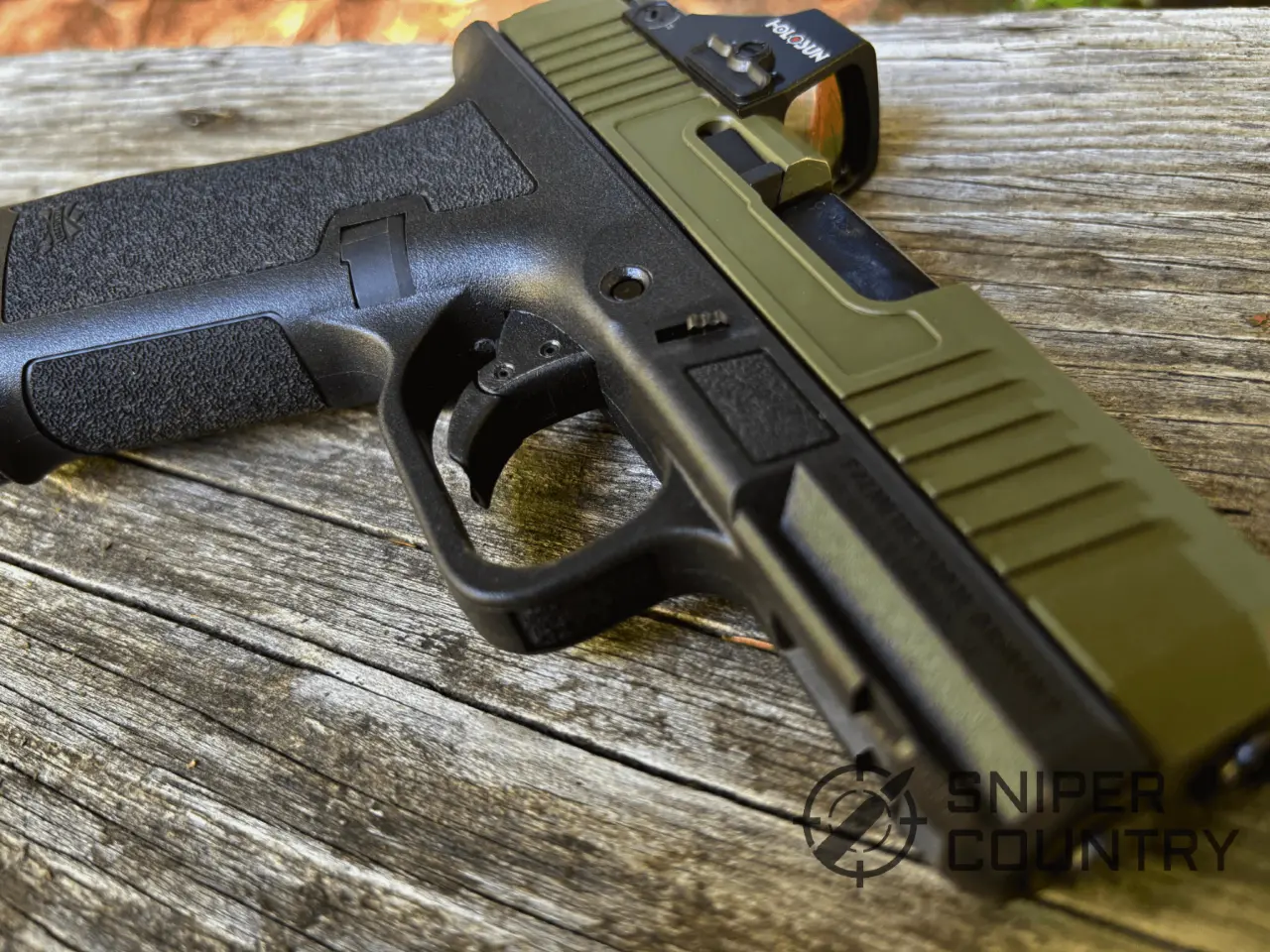
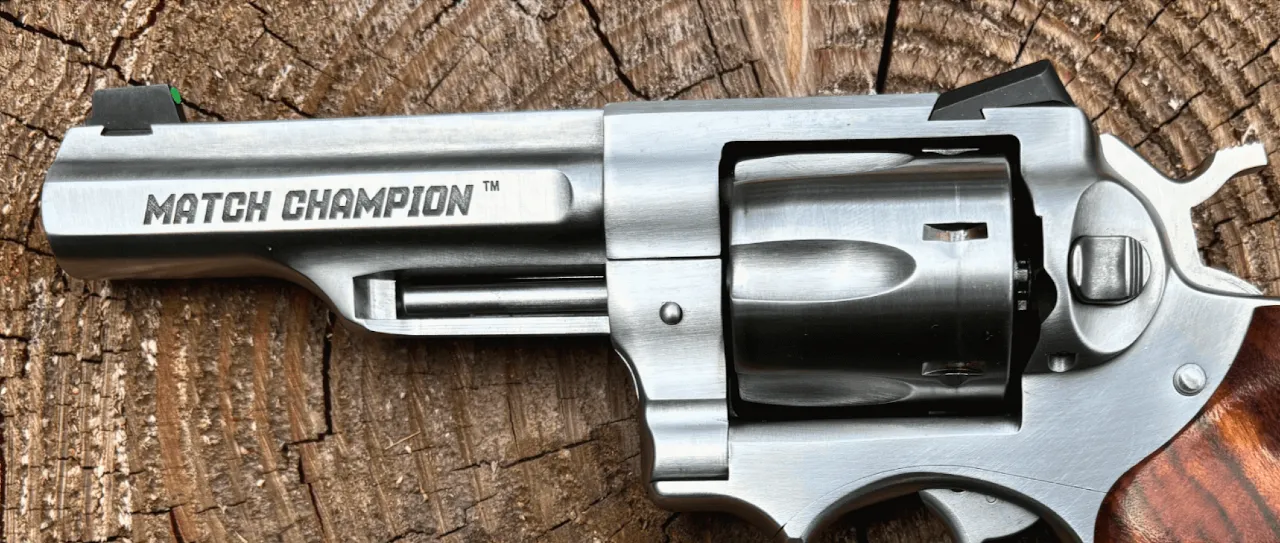



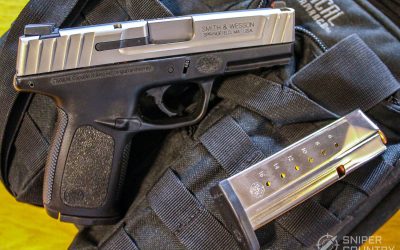
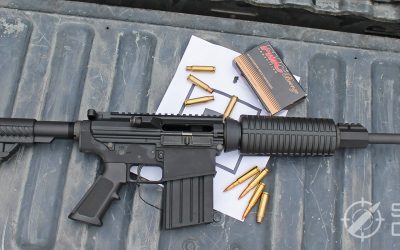


![9mm Glock Models [Ultimate Guide]](https://snipercountry.com/wp-content/uploads/2018/10/Glock-17-vs-Glock-19-vs-Glock-26-vs-Glock-41-vs-Glock-43-WM-400x250.jpg)
![Handgun Caliber Chart [2025 Ultimate Guide]](https://snipercountry.com/wp-content/uploads/2018/10/Handgun-Caliber-Comparison-400x250.jpg)
![Rifle Calibers [Ultimate Guide]](https://snipercountry.com/wp-content/uploads/2018/12/Header-1900-400x250.jpg)



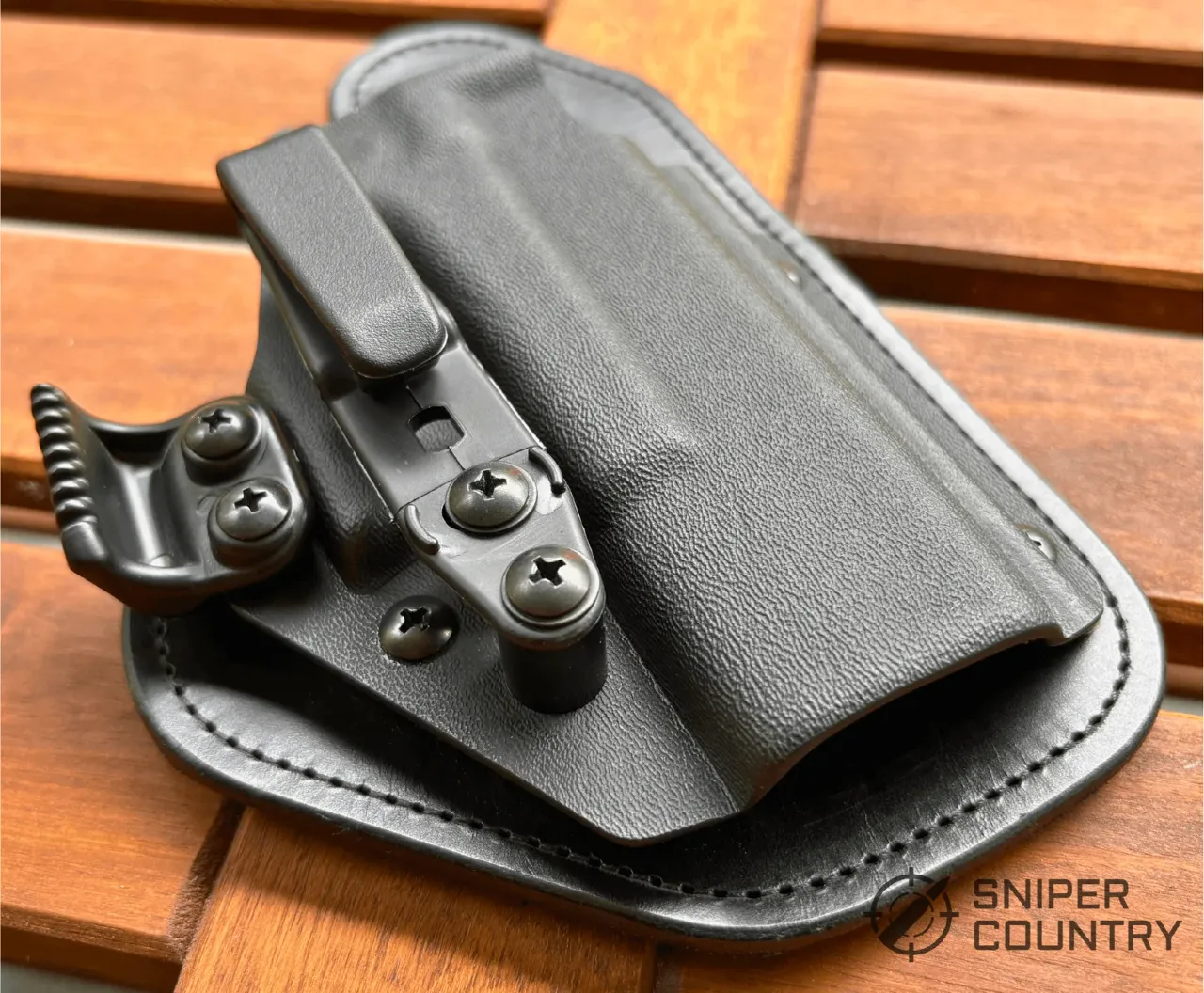


42 Responses
Good article. Very enjoyable. I just wish RRA offered this with a mid-length gas system and 5R rifling option. That would be extremely tempting. Thanks for the article.
Tom, here’s a similar RRA rifle with a mid-length system: https://www.rockriverarms.com/index.cfm?fuseaction=category.display&category_ID=62
I just wanted the shorter one to test, but they offer several different models. I was impressed with the quality overall.
Thanks for writing!
The rifle reviewed seems solid and dependable, so no gripes with that, my only comment is that it LOOKS too ‘plasticey’! I repair a lot of guns, real and ‘toy'( airsoft, etc.) and it looks just like an airsoft M14, or whatever. Maybe if it was all black, it would seem better?
Richard, could be. The “black factor” works for some guns and against others. I thought it was well-built, and I like the colors but tan is not for everyone, I agree. Thanks for writing!
I like the gas port to be more towards the muzzle. I don’t like all the plastic parts. Did Mattel make a lot of those parts? Also anything less than a 20 inch barrel won’t be among any consideration of mine. I would be much happier with a better made used model that I know won’t fall apart on me and will hold it’s zero because the sight adjustments are metallic. I don’t get why it weighs 7 pounds with all that plastic. Is the plastic mixed with alloys of lead?
Phillip, you raise some good points. These rifles generally get good reviews from owners, but if you want to ask the company about these things, here’s the link (below). If you hear back, let us know! Thanks for writing.
RRA Contact: https://www.rockriverarms.com/index.cfm?fuseaction=page.display&page_id=28
The weight in RRA’s isusually in the barrel, with a little extra in the “match fit” upper/lower receiver. If the upper/lower doesn’t flex,twist, move, during trigger pull, it tightens the accuracy from a shoot where you aim gun, to a shoot where you think gun. The development team of RRA/Quantico did a masterful job. Big attaboy to RRA goes in because when field/division folks gave them ideas, they listened,evaluated, cleaned up the ideas, and incorporated them into production guns.
Filipe, good points. Sounds like you know what you’retalking about. Thanks for writing!
Hi,
Pretty good article…you failed to mention in the History of the Rifle another most serious problem in the early years and a most important fault in the first issue of the M-16 .
McNamara refused to have the chamber and barrels Chrome lined/plated. In Vietnam the chamber and bolt, would rust together over night and the Troop could not pull the bolt back and chamber a round was another serious issue along with the powder issue you mentioned. Unknown numbers of lives were sacrificed/lost because of McNamara’s refusal.
The Army issued a comic book detailing the cleaning and maintenance of the AR-15/M-16.
USAF Father of Strategic Air Command (SAC) General Curtis LeMay made the first order the AR-15 for the USAF of the US Military..
Roughly……in the early 1980s the concept of the SAW as brought to life. The US Military wanting a machine gun that was lighter than the M-60 and of the same caliber as the M-16 and wanted it to perform certain parameters…. thus came the birth of the SAW.
With the birth of the SAW and it’s heavier bullet. When the SAWs ammo was used in the M-16, the bullet would not stabilize and accuracy suffered.
Same with the SAW when firing the standard 55 grain FMJ/FMJBT.
To meet the parameters and make the concept work brought about the M-16A2.
This increased the range of the M-16
It also brought about another change/modification to the M-16. The Three Shot Burst and end of Full Auto AKA Rock-N-Roll.
The original M-16 fired too fast on Full Auto unless one spent a lot of time learning trigger control and it
wasted a lot of ammo.
Nobody (interesting handle!), you sound like you speak from experience and that was what I wanted – folks to write who have used ARs in other-than-civilian experiences. You are right, though, that many soldiers and Marines were killed when their rifles wouldn’t fire, or couldn’t be made to chamber a round. McNamara was to blame for at least part of the problem. They finally made it somewhat better with the A2, but the rifle had already earned a reputation. Interesting comments – thanks for writing!
Mike
The name comes from what is/are part of the Old Spaghetti Westerns. Thank you for finding it to be of interest. I still enjoy them. Look up Peter Fonda and Terence Hill (one special movie about the name) and
Terence Hill and Bud Spencer if you are interested……….if you like Westerns and like to laugh…..give them a look.
I am a USAF Military Veteran and when I came along, I was trained by those that came before me and others. They passed on hard lessons learned and paid with Blood and Sacrifice and Loss for and by many who made The Supreme Sacrifice.
You either learn from History or you are Destined and/or Doomed to repeat it.
The “Made By Mattel/ The Black Rifle” did have a very bad rep with its Birthing pains….for a long time afterward…..perhaps still does among some. It has long since over come its past and now has what if I am allowed to use the term “modern issues” with the gas system and overheating. Something I feel most civilians probably most likely will never have to face other than perhaps on a range.
I might well be wrong on that………I leave that up to others to decide. However since the Rifle has been around the Military Circles going on for more than 60 Years and going on near 70 or so Years and after it’s deadly start to a good many of it’s users.
The platform remains extremely popular and is no doubt the or ONE OF the most popular selling rifles in the US.
I (among many numerous others) did carry the AR-15/M-16 (along with and the M-203 and the M-60/ “THE PIG” among other Weapons) “For Other Than Civilian Purposes.”
The AR platform is great platform for people that want a different caliber or a “Two-in-One or more caliber such weapon……push Two pins remove the upper replace the upper push in Two pins and Voila!. That is all they have to do to change out the Upper. or in the case of the 5.56×45 NATO get a kit that replaces the bolt carrier group (BCG) and a magazine and they have a .22LR. But simple as pushing out Two Pins changing Uppers replacing the Two pins and you have a brand new caliber. It is really that simple!!
IF one is fussy/choosy about the gas system….they can build one to their Specs….Or can buy a new such upper OR a whole brand new Rifle of whatever they choose.
As for the .308/ 7.62×51 NATO platform there are TWO different platforms to build from. The AR (ARMALITE) and the DPMS are the TWO …..308/7.62×51 platforms to build from.
There is no Military Standard in the “X”R-10 as there is with the AR-15.
Example there is the ARMALITE AR-10 and Palmetto Arms PA-10 among numerous others out there. Even Magazines can disagree about which platform they will make “Nice-Nice” with.
So Be Warned and Be Ware BEFORE you Build or Buy!
IF someone is going to build a “X”R/A-10 rifle they must go with one platform or the other. Do not mix the platforms as they DO NOT play well with each other. Some parts will interchange but they may be finicky and limited.
Using the “XA-10” lower DOES allow one to choose from a new world of calibers that the AR-15 does not allow because of the smaller magazine well. One can also build the .243 Winchester for example
CORRECTION: Make that HENRY Fonda NOT Peter.
Nobody – the man with no name? – my buddy Duane has, in his shop, a Cimarron .45 Colt “Man With No Name” single-action. Nice gun!
You sure have a lot of experience with ARs! It was good reading about your experiences. I am getting just what I’d hoped for – guys who have been there and done that with the M16 writing in. I do like the modularity – I’d like to have an upper in .350 Legend. And, thanks for the info about the AR-10 variations. I appreciate you writing! (And, I do like the spaghetti westerns…Clint Eastwood was the king of that genre. He STILL rules!. As for Henry/Peter, I knew who you meant…
I’m a lefty too! Pistol anyway, rifle right since I’m right eyed. Lots of practice required. 1 o’clock cant on sights with pistol allows for eyes open shooting. What say you?
Jeff, I just shoot with my left eye. As soon as I can I want to experiment with tilting my head so my dominant eye (right) is looking through the sights. I’ve just been too busy to try that, but I will. Sounds like you have it figured out. Thanks for writing!
Let me add a bit to the brief “Enter Colt” history section: Years ago I read a magazine article about the 1st AR’s produced, the AR-10. Evidently Fairchild held the patent for manufacturing the AR-10 in the late 1950s, but when the article was written, Colt had the only two in existence. And while Colt would not allow either to be taken off the property, they did allow the writer to examine & fire one — he liked it. The AR-10s were chambered for 7.62 x 51mm NATO & there was a trigger in the handle section that you pulled back to charge the receiver. But the military had decided on the smaller 5.56 x 45 mm ammo (primarily because a soldier can carry more of it) & told Colt they liked the basic design, but not in 7.62 x 51. So the next iteration was the M-16.
I see there are companies making rifles they call AR-10’s because they’re chambered for larger ammo like .308 Winchester; And if I were to buy an AR style rifle it would be one of those — personally I have no use for the .223 (5.56 x 45) ammo. But for those who do, the Rock River Arms LAR-15 might be just the ticket. I note some casting flash on the plastic parts that should be cleaned up — you could easily do that yourself, but it makes the rifle look cheap. I think it’d be worth a 1/2 hour or so with an X-Acto knife & some fine sandpaper to present a more finished rifle.
Art, coming from a scale model background and having removed more than my share of flashing from model moldings I see what you’re talking about. At least you don’t need to remove metal…the plastic is easy. And, an AR-10 would be interesting to shoot. Thanks for writing.
Thanks, I appreciate all your reviews. Could you do a review on the RRA .308?
Honu, wish I could. I review what they send me and so far this is it. I would, however, assume that it would be built to the same standards as the one I shot…if that’s the case, it should be very well-made. Thanks for the kind words.
Grew shooting .22 rifle(short, long, & long rifle round), 12 ga single-shot or Browning auto. The shotguns: bird or deer drives w dogs or still hunting. We did not have a high powered rifle in the community.
. 22 7 round clip till I lost it @ age 10. My father said “that is the way you use it now, no more clip”!
Therefore I loaded it by dropping round into chamber; a good bit harder than loading a true single shot. I used that rifle in this manner for 7 years small game hunting or general use around >200 acre farm. I had access to thousands of acres of paper land therefore I harvested ~thousands of small game(squirrel mainly) w a few deer @up close. I acquired a one shot-one kill mentality, I had to stalk each creature usually. I tried for head shot typically. With proper rest, I was good out to 80-100 yards w long rifle round.
This most certainly saved my life many times in Combat.
At Parris Island in mid-1967, I fired my 1st high powered rifle. Blending Marine rifle techniques with what I already knew, I was pretty good with M-14. I saw other comments on Mattel toy mentality about M-16. Yes, the M-16 but what didn’t have it’s issues.
I was in heavy continuous combat from 1/27/68 – > 4/8/68 with 1st Battalion, 9th Marines “The Walking Dead” thru Siege of Khe Sanh & later hill battles(gravely wounded 4/8/68 while climbing Hill 689). I had a M-14 & M-16 always on me. We were basically in the clouds >30% of the time(mountains coupled with monsoon).
Supplies – air dropped by pallet load w a little by prop or copter.
Personally carried, replenished & cleaned every day:
28 mags(19 rounds or more broke mag spring) M-16,
12 mags M-14
300-500 rounds of linked M-60(no tracers allowed), If you needed tracers then you ‘ain’t’ a qualified Marine machine gunner.
6 mags .45 Colt
20 – 40mm grenades in pouches
3 LAAW(light dusting)
6 hand grenades(secure in webbing, pins not remotely bent straight)
2 Claymores(explain words to FNG: ‘POINT TOWARD ENEMY’ & how to double bootytrap)
Cleanings was done w/o oil/lub, every round + hundreds backup on person. The red, fine volcanic dirt/dust would get into everything so no oil was manner of life/death. Cleaned all this plus every weapon every day as #1 priority…. Clean, other tasks, field of fire, hole, eat, whatever, then sleep if not on watch or patrol…
Weapon functionality: Center mass, head shots for ‘Rambo’ type-live little time if you wait
M-14 open sights >800 meters one hit terminal;
M14 Scoped sniper gear(KIA’s: left behind) >1200 meters when conditions allowed after totally doped out. 30-06 there also, no want but no takers. Turned it in to Weapons.
M-60 – very short burst to mimic M-14 on auto
M-16 four hits terminal if not amped on optium, then call arty, Puff & Tac Air….
Pistol . 45 ~25 meters one shot terminal, otherwise throw it at him….
Care of ALL carried weapon systems was always absolute #1 priority.
Your weapon(s) decide life/death coupled w Marines to left & right.
The words about comic book manual on how to clean M-16 was around, was used as marginal toilet paper. M-16(actually any long gun) rust round in chamber potential: used rubbers:
I got medical gloves from a nurse(my mommy: guys) & cut fingers off for this then use fingerless part of glove to cover recievers of weapons – on edge of barrel of all except primary. Surgery caps also used, one has been to use whatever. Her office was just throwing away. She said” they not sterile”. I said “I will put them near some heat(ha ha)”. The plastics was hell to get off but weapons never complained. Some FNG butter bar say to remove all non-issued material. I told him, it were issssued from the ‘Mother’s’ lobe from Gunners @ Quantico. Easy to please those who knows everything(lol).
Much bigger concern was cook-off or fused due to hot chamber after fight, not maintaining safe handling of weapons, primer strike but no fired(hot round) , Water, C rations, etc.
You take care on weapons & they are there for you.
Run out, throw grenades, rocks, get weapon from expired friend or foe, stay in fight period….
Was not crazy of M-16 terminal effect. Just you stated, you going to upgun for big game.
I realized years later that I basically enforced the >1000 ft-lb terminal kinetic energy requirement for non alerted hunted.
Rock & Roll is for Rambo, reality is controlled single shot will insure 75% or >10 targets hit @ 5 meters or 200 meters w M-16. That is after M-14 is dry out of mags….
Did the Marines @ Chosin stop human waves with R&R?? No, M-1’s: the one’s not oiled(-40°C) & organic mg’s.
“It is not how many rounds you shoot but how many hits you made”!!
Mike, I am left-handed too. My master eye switched to right when left eye got weak. Now, I am easily shot in either direction. Actually better right-handed, have made a # of +300 yards shots w . 270 win
M0311, wow! you’ve been there, done that for sure. That’s what I was wanting, guys who’ve used the M16 in combat to write about their experiences. I am truly in awe of all who served. Thanks for your honest opinions about the weaponry and thanks for your service…we can never repay vets enough for what you went through. I thank you!
Thanks for profound, touching reply….. l am straightforwardly honest in reviews/comments without claiming to be anything but being a ‘Marine Rifleman’. Google ‘1st Battalion, 9th Marines’, we have a rather profoundly unique unit history in ‘Nam’. I was 18 years old when in’ Nam; rank was LCpl(E-3) when WIA on Hill 689, my third Purple Heart & medevaced back to U. S. A. when semi-stable. I was awarded Permanent Retirement(Disability-Combat) from USMC in 1969 & was sent by VA to University for six years @ no personal cost. I got Thermodynamics & Mechanical Engineering B. S. Degrees with additional extensive studies in Computer Science, Abnormal Psychology & Graduate level Calculus. Worked for Fortune 20 Company for 30+ years as Senior Technical Research Engineer. Retired @ 55 & have been enjoying life. I also went thru Paramedic training at night while working as an engineer because I wanted the enhanced skills. Welcome to any questions or provide details of personally used weapon system functionality in dirty/harsh combat battle environments. Thanks for your heartfelt comments, it is always good to hear thanks. I can give insight of combat functionality for any organic USMC battalion level small arm system of the era.
M0311, I appreciate your comments again. It sounds like you served your country very well. I was 18 in 1970, so I remember the treatment you guys got when you returned to the U.S. It was deplorable. Your hands were tied, with strict Rules of Engagement and other political considerations, and you were fighting a war against seemingly ghost forces that disappeared at will. I have nothing but respect for you. You really got a good education, too…at least there was the G.I. Bill. I do have a question about the M1911A1, or whatever version of the 1911 you used…how did it fare in the jungle environment? Thanks again for your comments!
I don’t have any negative feelings about the way I was treated. I got out of service & moved on just like WWII/Korea Vets. There were no ‘Rules of Engagement’ in Khe Sanh area(free fire zone). I joined USMC because I wanted to. I had been accepted to an Ivy league University per my Mother’s desires eight months before I left for Parris Island. I believe we should try to serve in times of need otherwise we just stop caring about our country. After extensive combat with ‘no quarter’ enemy trying to kill you, grown men came home get their feelings hurt or offended by mere words or actions; REALLY. 95% of personally known Marines in 1/9 didn’t come home. I sure they would love to have been alive @ home so they could be hurt or offended.
We didn’t have a problem with a ghostly enemy; we had small to very large forces of enemy(NVA) going toe-to-toe to us constantly; directly or indirectly. Mid-level battlefield NVA commanders from what I personally saw rarely follow the “Sun Tzu” philosophy. We fought thru the whole “77 day Siege of Khe Sanh”(1/20 ->4/7/68) & afterward in the valley & surrounding western mountains. We always had plenty of enemy (6000 Marines vs 35,000): one reinforced Marine Regiment vs three reinforced NVA Divisions. I had ~80 days of continuous combat of mountainous jungle environment or it was jungle till it turned into totally destroyed landscape. I never had the occasion of encounting any guerilla type Viet Cong in lowland jungles. I only fought hardcore NVA who gave out as much as they got.
About Colt 1911, I was given my 1st 1911 after being there ~10 days by my Platoon Sgt. while he was awaiting a medevac after tremendous night battle. He died in my arms one hour later because at daylight the incoming medevac exploded @LZ by extremely accurate heavy enemy 7.62mm & 12.7mm fire. All medevacs were halted for >6 hours. He said he had used it since he got in ‘Nam as a Cpl three years earlier – June 1965. Side-arms are only issued to NCO(>E-3) & Officers. I watched him many times clean it to some detail religiously every four hours light or dark if there was spare time along with his M-14 & cutoff barrel AK. He said he had killed 18 with 1911, shot it in combat ~50 times, ~200 rounds thru it messing around/practicing. It never him gave a problem(never malfunctioned). It was made in 1964, serial u/k. The bluing was worn away but finger painted dark. The various internal frictional sliding surfaces was not square edged but slighly little rounded but there was no felt or heard sound when suddening moving or shaking it. Clips feed in perfect even those pretty dinged up. The bore was spot on clean with no visual pits, etc. All internal components were in very good shape even after ~3 years combat service. I had the weapons company Gunnery Stg.(E-7) check it out & he was it in excellence shape. I fired it ~40 times to make a enemy flinch or kill l big, aggressive rats. Shot it 30 times in combat @running enemy with range <15 meters; mostly at night by flare light with 15 single shot hits: target down. I didn't practice with it, enemy hugged us too close. I went outside the perimeter many nights with ~six other Marines for ~1/2 click(1/2 kilometer) to check out whatever command wanted. I always crawling so 1911 got real dirty(didn't desire to shoot it as you crawled thru the enemy, pure last resort). Used a Chinese 9mm since it didn't upset the enemy much. Later on outside perimeter sneaking around, I used a silenced or at least much quieter .22 'hush puppy' single shot that I got by trading with nearby Green Berets @FOB-3 about <200 meters from our perimeter line. It was good for <1' & nearby enemy didn't get upset by it's light cough. Also was given an engraved 1911 from a Captain as a gift for something(saving his life). It was in perfect shape in every aspect. That 1911 was in my left hand & a ~Swedish K type in right hand(another Green Beret trade) while on guard @ night inside the wire. NVA suicidal sappers had an very unpleasant habit of crawling thru mine field/German Razor wire & try blow something up. They was totally silent & actually crawl over you when you covered by your multi-layered parachute quilt(temperature <45° @night) but you could smell the heavy fishy odor from what they eat. 5 shots 40% of time when I shot at a combatant, It was my only shot before near certain death: Charging @me, crawling over me in my night fighting foxhole, breathing on me; always 7 +1 & always cocked when sleeping @night – placed beside me in holster with flap over it or on night guard(in left hand). If you cocked it, far too much noise. If there was ever a grown man pacifier, the Colt. 45 cal was ours in the dark.
Wow…you could write a book. This is really interesting to me since I wasn’t there and can only begin to get a picture of what happened through other guys’ eyes. I have the utmost respect for you and am glad you made it back. Thanks for sharing, about both your experiences and your weaponry. I stand in your debt!
hello Mike,
thank you very much for this review I enjoyed it. I am planning on purchasing this rifle in the near future and I wanted to know does it have anything on the carbine to attach a 2 point sling or will I need to purchase an attachment and can I even attach anything for that purpose. I’m assuming the slots on the collapsible stock are for attaching a sling to the rear. thank you very much for your help and input.
Michael, I don’t recall this gun having sling attachment points fore or aft – you might need to get those from, among other places, Rock River: https://www.rockriverarms.com/index.cfm?fuseaction=category.display&category_ID=49
They sell accessories like these. Thanks for the kind words, and thanks for writing!
thanks for the reply mike! So i finally have my rifle and I love it very much. I wanted to ask your advice on a scope/reddot. what would you recommend for this rifle that would be let’s say an all around good addition. I’m not an expert by any means and will probably just be shooting for fun at targets or small varmit hunting. So is there one you could recommend that would fit with this rifles range capacity I don’t want to buy one that is more than what this rifle is capable of. Thank you Mike for you time and expertise!!!
Michael, that’s a pretty wide-open topic. I would think that it would depend on your use of the rifle. If you are going to hunt varmints, say, at a decently-far range then a good scope would be in order. I like the variables, but that’s just me. I would go with a standard 3×9 if your budget is limited, but if you really want to reach out and touch something, more magnification would help. Also, I wouldn’t go with less than a 40 mm objective lens diameter; 50 is better. The larger diameter lets in more light, at least in my experience. If you are simply going to target-shoot at closer range, any decent red dot sight should work. If your budget is limited, check out the Burris, Dagger Defense or Bushnell offerings. For a little more, you can get a Vortex, Trijicon or Eotech. There are many online reviews of these. Or, read Ken’s review of red dots.
Let us know how it goes. Thanks for writing!
I got an “Operator III” in 2014. I don’t buy “Shiny stuff”, it’s a tool and has to hold up to rough handling and it does. I’m looking to buy another and will consider the .350 Legend you mentioned in your review. I might need a good wild hog gun. Yes, I’ve used “White out” too.
Robert, I think you’ll like the .350 Legend – keep us posted, OK? Thanks!
Hi Mike, The thing that concerns me is that there are so many mixed reviews on RR. One of the most common gripes I hear are feeding issues (although not heard when reading about the vigorous testing that the DEA and FBI put rifle thru). If that’s the case, I’d feel much more at ease reliability wise with a S&W M&P Sport. They will eat any ammo you throw at them without any problems. Not to mention they are way lighter and half the price. That’s just me.
Texas Mike (love that handle!), it’s your money and you can spend it on whichever rifle you like. If you are leery of feeding issues with RR, then go with the S&W – it’s a heck of a good buy. My friend Duane can’t keep them in his shop. I appreciate your comments!
Thank you sir for the review and your reply.
You’re welcome-we Mikes have to stick together!
Rra eat any all and better then s/w. Build
Ricky, they do make a good product, for sure. Thanks for writing!
Where RRA made their bones was when they recognized that “milspec” is the bottom side, of the bottom rung, on the quality scale. RRA then went to work in the attention to detail department. Anything that could be “detailed” and improved, was. Most of the other quality AR component assemblers started using RRA parts, raising the industry standards, for the most part, across the board. I had 120k logged rounds through my RRA when I turned it in. Recommended maintainence only. Zero broken parts. Still shot 2.5 moa when I turned it in.
RRA IS the industry standard for AR’s.
Jaime, thanks for your comments. I always appreciate hearing from folks who’ve been there and done that. RRA does seem to be super-precise when it comes to specs. Thanks for writing!
Re: chambering problems- the only chambering problems I ever had with my RRA was when I didn’t clean it for a whole two week school at M.I.S.S., when I shot reloads that had not been full length resized. And after shooting about 300 rounds of lacquered coated, steel cased, cheapo ammo where the lacquer melted to the chamber. A quick cleaning returned it to 100%. Low quality mags also caused problems. Bought a stack of Hi-Standard AR mags, and never had another problem.
Dave, thanks for your comments. Experience is the best teacher – sounds like you have plenty. Thanks for writing!
Good Review! From someone that was issued a M1 carbine in vietnam due to a shortage of M16’s for non combat personnel I only read the the stories of earlier M16 field failures. Jump50+ years and was looking for an RRA PISTOL/CARBINE to shoot an excess of 40S&W ammo accquired. And there i find a LAR-40 for sale! The only problem was it had been not only discontinued (buy still with a lot of ‘lost leader’ out of stock ads) It was never intended to ever be reproduced and that included specific parts like magazines! Oh well probably a good business decision even though a bit misleading. But in the long run, I’m very happy with the quality and shooting experience. only hope it last through my ammo inventory